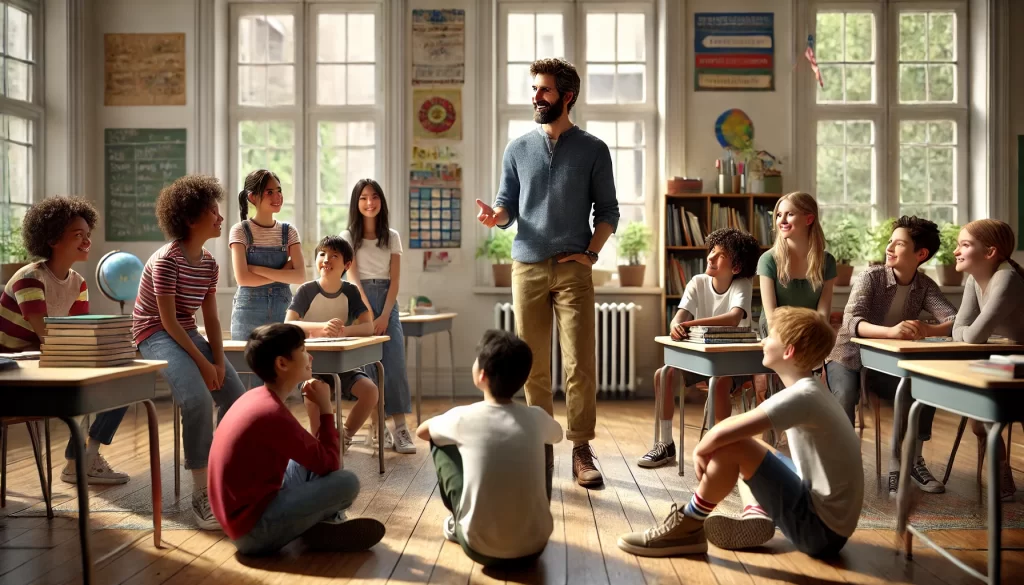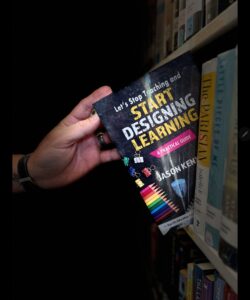Picture this: A classroom where learners know their teacher not only cares about them but expects great things from them. It’s a space where trust fuels risk-taking, where mistakes are part of the process, and where learners push themselves further than they thought possible. Too often, we hear the mantra “relationships before rigor,” as if relationships and rigor exist in a hierarchy where one must come first. But the reality is different. The two are not sequential; they’re intertwined. Rigor doesn’t just follow relationships—it is caused by them.
This isn’t just semantics. It’s a fundamental truth about how learning happens. Relationships are the fertile ground in which rigor grows. Without trust, high expectations feel punitive. Without care, challenges feel impossible. Let’s explore why rigor is the intentional product of relationships, and how relationships pave the way for the high expectations that every learner deserves.
Rigor Isn’t a Barrier—It’s a Pathway to Growth
The word “rigor” can often feel loaded. For some, it conjures images of overly difficult work or high-stakes pressure. But true rigor isn’t about making tasks harder; it’s about making them meaningful, engaging, and appropriately challenging. Rigor is the intentional design of learning experiences that require learners to think critically, apply skills creatively, and stretch their understanding beyond the surface. High expectations are central to this process. Without them, rigor collapses under the weight of low expectations and busywork.
When learners encounter rigor in a relationship-rich environment, they don’t see it as insurmountable. Instead, they see it as an opportunity to grow because they trust their teacher and know their teacher trusts them. This mutual respect forms the foundation for the “just-right” challenges of scaffolding (effect size of 0.52)—those steps that stretch a learner without breaking them. Utilizing scaffolds as part of our response to intervention (effect size of 0.73) and you have a highly effective strategy to ensure that rigor supports, rather than overwhelms, learners.
The Relationship-Rigor Connection
At its core, rigor demands vulnerability. To engage in rigorous tasks, learners must take intellectual risks, admit when they don’t know something, and embrace the struggle of learning. These risks are only possible in a classroom where relationships have created a culture of trust, safety, and belonging.
Feedback plays a critical role here. Research points to feedback as a significant influence on learner achievement, with effect sizes ranging from 0.41- 1.01 depending on its use. But feedback is only as effective as the relationship behind it. Constructive feedback lands differently when it comes from someone learners trust. A teacher’s belief in their learners’ potential transforms feedback from critique to encouragement. It tells learners, “I see you. I believe in you. I’m invested in your success.” This belief turns feedback into a tool for growth and rigor into a shared pursuit.
Moreover, relationships ensure that rigor doesn’t become one-size-fits-all. When teachers know their learners well, they can design tasks that are challenging but accessible, stretching each learner based on their starting point. This personalization not only fosters growth but also demonstrates that high expectations are for everyone—not just the “high achievers.”
Designing for Rigor and Relationships
The key to integrating rigor and relationships lies in intentionality. Designing rigorous learning experiences starts with clear learning targets. Teacher clarity has an effect size of 0.85, meaning it’s essential for making learning accessible to all learners. But clarity is only part of the equation. The other part is designing tasks that demand higher-order thinking—tasks that ask learners to analyze, synthesize, and create, rather than simply recall.
Take, for example, a lesson on figurative language. A low-rigor approach might involve asking learners to identify similes in a text. A rigorous approach, on the other hand, could ask them to create their own figurative language, analyze its impact on a narrative, and defend their choices to peers. Rigorous tasks don’t just demand more; they demand better—better thinking, better understanding, better collaboration.
Relationships ensure that learners are willing to engage with these demands. A teacher who has built a foundation of trust can push their learners to tackle these challenges because those learners know their teacher will guide them through the process. It’s not about throwing them into the deep end; it’s about walking alongside them as they learn to swim.
Rigor Rooted in Relationships
The phrase “relationships before rigor” points us in the right direction, but it doesn’t take us far enough. It implies a sequence, a checklist: Build relationships, then demand rigor. But real learning is messier—and far more beautiful—than that. Relationships and rigor don’t follow one another; they feed one another. Strong relationships make rigor possible, and rigor strengthens relationships in turn.If we want to create classrooms where all learners thrive, we must stop treating relationships and rigor as separate goals. Instead, we must see relationships as the cause of rigor, and rigor as the ultimate expression of our belief in our learners’ potential. So, let’s rewrite the mantra: “Rigor because of relationships.” Because when we care deeply, expect greatly, and design intentionally, our learners can—and will—rise to meet the challenge.


